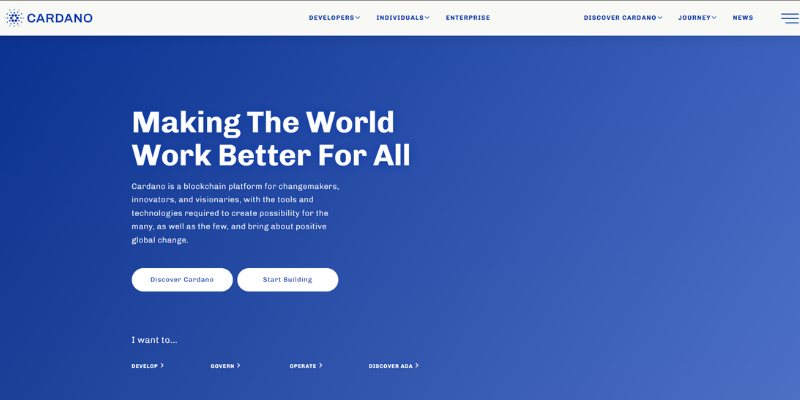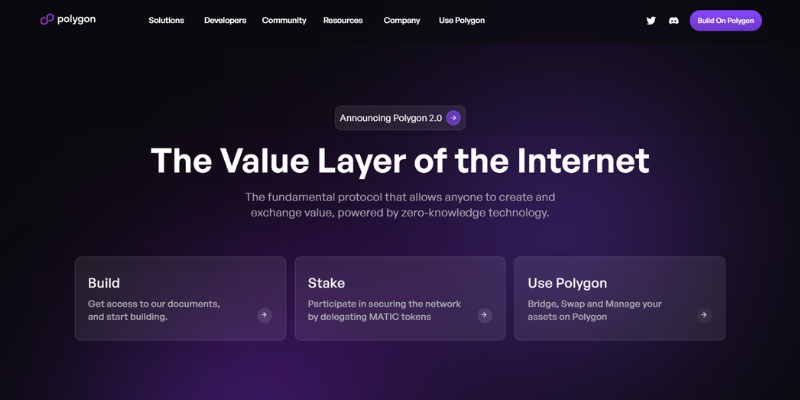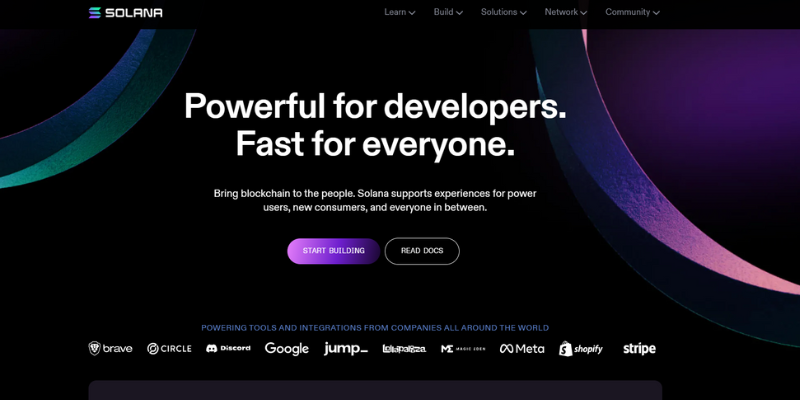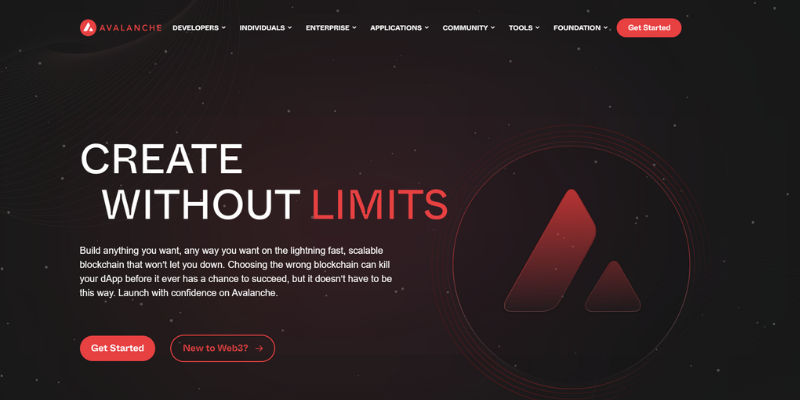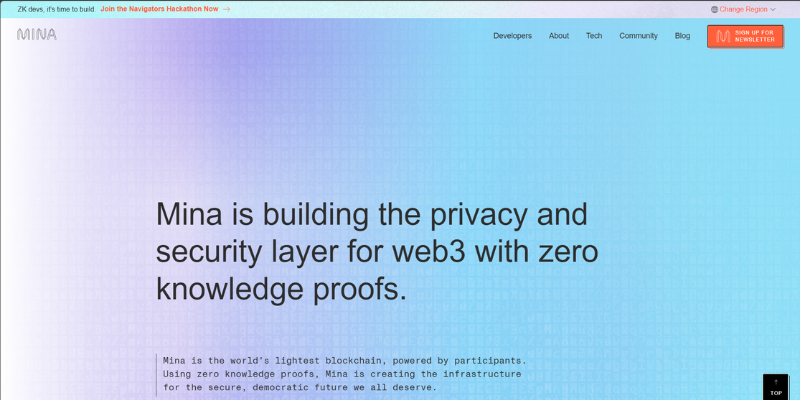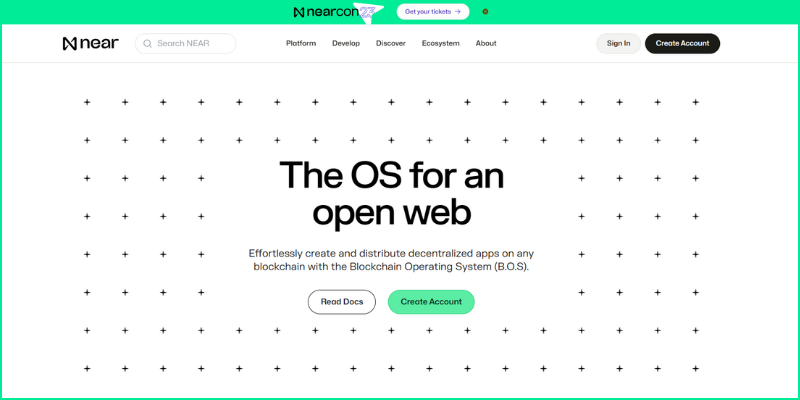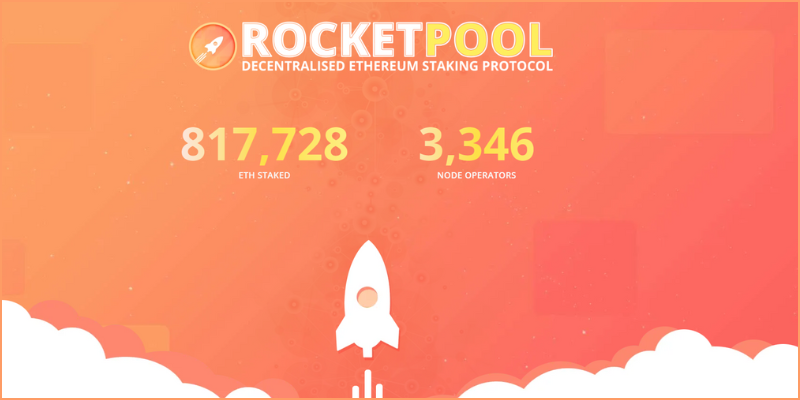11 Best Proof of Stake Coins to Buy
Proof of Stake (PoS) is a method employed by Proof of Stake coins to validate transactions within a blockchain, offering a more environmentally friendly and efficient alternative to the traditional Proof of Work (PoW) approach.
Unlike PoW, which requires complex computational puzzles to be solved by computers, PoS selects special users based on the amount of digital currency they possess.
Due to these advantages, PoS blockchain have recently become popular due to their sustainability and reduced environmental impact.
In response to this growing interest in PoS-based digital currencies, this article provides investors with a concise overview of the leading options to consider for investment.
Best PoS coins are reviewed in the following order:
- Cardano (ADA)
- Polygon (MATIC)
- Algorand(ALGO)
- Solana (SOL)
- Polkadot (DOT)
- Binance Coin (BNB)
- Avalanche (AVAX)
- Ethereum (ETH)
- Mina Protocol
- Cosmos (ATOM)
- NEAR Protocol
In addition to the overviews, this article provides an overview of Rocket Pool and offers an FAQ section to answer the most common questions.
Table of content
Key Notes
✔️ Cardano (ADA) stands out in cryptocurrency as a PoS digital currency with a pioneering approach to scalability, security, and sustainability.
✔️ Polygon’s (MATIC) emphasis on interoperability and high-performance infrastructure sets it apart in the crypto industry.
✔️ Algorand’s (ALGO) pure PoS consensus algorithm eliminates the need for a central authority or PoS mining pools, ensuring the network is decentralized and secure.
✔️ Solana (SOL) is a PoS cryptocurrency known for its fast, low-cost, scalable network.
✔️ Polkadot’s (DOT) sharding mechanism enables parallel processing for faster and more efficient transactions.
✔️ Binance Coin (BNB) stands out for its utility within the Binance ecosystem and offers various investment opportunities through its expanded services.
✔️ Avalanche (AVAX) offers high transaction speeds of up to 6,500 TPS through its unique PoS in blockchain architecture, including the Exchange Chain (X-Chain) for fund transfers.
✔️ Ethereum (ETH) has shifted to a PoS algorithm to become a more secure and less energy-intensive network.
✔️ Mina Protocol’s lightweight blockchain design and zero-knowledge technology position it as a promising contender in the crypto and blockchain space.
✔️ Cosmos (ATOM) facilitates seamless interaction between diverse blockchain platforms.
✔️ NEAR Protocol offers multiple staking options, including running a validator, delegating NEAR, or using a centralized exchange.
Below, you can find a detailed description of each.
1. Cardano (ADA)
Cardano (ADA) stands out in cryptocurrency as a best PoS coin digital currency. It has garnered substantial attention in the crypto community due to its pioneering approach to scalability, security, and sustainability.
Specifically designed as a platform for creating and deploying decentralized applications (dApps) and smart contracts, Cardano’s inclusion in this list is attributed to its distinctive emphasis on research-backed development, with a strong focus on sustainability and scalability.
The Cardano team employs a scientific method in developing the protocol, involving thorough peer review and extensive testing to ensure the security, scalability, and sustainability of Cardano’s protocol.
Utilizing a PoS consensus algorithm, Cardano allows validators to earn staking rewards by contributing to network security and transaction validation. The selection of validators is based on the quantity of ADA they possess, with potential rewards of up to 5.5%.
Cardano’s Ouroboros protocol is also engineered for energy efficiency, presenting a more sustainable alternative to the energy-intensive PoW consensus algorithms.
Cardano has also made significant strides in interoperability, marked by the recent introduction of the Hydra protocol.
Hydra protocol facilitates high-volume transactions and seamless communication between different blockchain networks. Ultimately, this makes it simpler for dApps to interact and exchange information with one another.
You can learn more about Cardano at our Cardano review.
2. Polygon (MATIC)
Polygon is recognized among the top PoS coin primarily due to its emphasis on interoperability. It facilitates seamless asset and information transfers between various blockchain networks, streamlining communication among dApps and resource sharing.
Through its PoS consensus algorithm, Polygon enables validators to earn staking rewards by contributing to network security and validating transactions. Validators are chosen based on the quantity of MATIC they possess, with the potential to earn rewards of up to 17%.
The significant traction gained by Polygon in the crypto industry is attributed to its focus on interoperability and scalability.
Its capacity to connect diverse blockchain networks and offer a high-performing infrastructure for dApps positions it as a promising platform for developing cutting-edge blockchain applications.
You can learn more about Polygon at our review of Polygon .
3. Algorand (ALGO)
Algorand earns its spot on the top proof of stake coins list for 2023 due to its groundbreaking approach to security, scalability, and decentralization.
Through its exclusive PoS consensus algorithm, Algorand eliminates the need for central authorities or cryptocurrency Proof of Stake mining pools, ensuring a decentralized and secure network. This feature positions Algorand as a promising platform for advancing cutting-edge dApps and digital assets.
Moreover, Algorand’s dedication to security and decentralization has resulted in strategic partnerships with prominent companies and organizations, broadening the potential applications of Algorand’s technology.
Additionally, Algorand’s network demonstrates impressive processing capabilities of up to 1,000 transactions per second (TPS) by employing a binary Byzantine Agreement (BA) consensus algorithm. This facilitates swift and efficient block confirmation.
Investors can earn staking rewards by participating in the validation process by staking their ALGO tokens.
Validators are chosen via a transparent and equitable lottery system. This structure incentivizes honest behavior, as participants risk losing their staked ALGO in the event of malicious actions.
4. Solana (SOL)
Solana is a Proof of Stake digital currency that has gained notable attention in the cryptocurrency industry due to its rapid, cost-effective, and easily scalable network.
Initially, Solana was conceived to offer a platform for creating and deploying decentralized applications (dApps) and smart contracts.
Solana earns its spot on this list because of its strong emphasis on speed and scalability. It boasts a network capable of handling an impressive 65,000 transactions per second (TPS), positioning it as one of the swiftest blockchain networks globally.
This remarkable TPS is made possible through Solana’s ingeniously applying a Proof of History (PoH) consensus algorithm. This method enables simultaneous transaction processing, eliminating the need for sequential block confirmation.
With Solana’s PoS consensus algorithm, validators can receive staking rewards by aiding in network security and transaction validation. The selection of validators is determined by the amount of SOL they possess, with potential rewards reaching up to 7.5%.
Additionally, Solana has shown significant advancement in its ecosystem development, marked by establishing the Solana Foundation and noteworthy collaborations with leading blockchain Proof of Stake projects.
You can learn more about Solana at our review of Solana.
5. Polkadot (DOT)
Polkadot is a PoS digital currency designed to offer a secure, scalable, and interoperable platform for decentralized applications (dApps) and services.
Its network is built to facilitate seamless communication and interaction among different blockchains, enhancing the ease with which dApps can share information.
Polkadot’s notable feature is its utilization of a sharding mechanism, enabling concurrent processing of transactions and data across multiple blockchains. This leads to quicker and more efficient transactions, positioning Polkadot as an ideal platform for high-volume dApps and services.
Polkadot’s PoS consensus algorithm allows validators to earn staking rewards by contributing to network security and validating transactions. Validators are chosen based on the quantity of DOT they possess, with potential rewards reaching up to 12%.
You can learn more about Polkadot at our Polkadot review.
6. Binance Coin (BNB)
Binance Coin is a PoS digital currency from the well-known cryptocurrency exchange Binance. The purpose of the Binance network is to offer a platform for trading, exchanging, and investing in various cryptocurrencies and digital assets.
A standout feature of Binance is its utility token status within the Binance ecosystem. Holders of BNB can utilize the coin to cover trading fees on the Binance exchange and engage in Binance Launchpad, a platform dedicated to introducing new Proof of Stake cryptocurrency projects.
Through Binance’s PoS consensus algorithm, validators can earn staking rewards by contributing to network security and validating transactions. The selection of validators is based on the quantity of BNB they possess, with potential rewards reaching up to 20%.
Binance’s ongoing expansion and progress distinguish it as a noteworthy addition to this list. The platform has broadened its services to encompass derivatives, margin, and futures trading, offering users various investment prospects.
You can learn more about Binance at our Binance coin review.
7. Avalanche (AVAX)
Avalanche is a layer-1 network hub for decentralized applications and custom blockchain networks. It is a well-known PoS cryptocurrency capable of handling up to 6,500 transactions per second (TPS).
Its distinctive blockchain structure enables the exceptional transaction speeds of Avalanche. The cryptocurrency comprises three distinct blockchains, each with its designated role in verifying the transaction process.
The Exchange Chain (X-Chain) is specifically tasked with facilitating the sending and receiving of funds on the Avalanche network.
You can learn more about Avalanche at our review of Avalanche.
8. Ethereum (ETH)
As of 2022, Ethereum operated using a PoW consensus mechanism. However, Ethereum has transitioned to a PoS algorithm to enhance security and reduce energy consumption.
Under the Ethereum crypto PoS system, validators deposit $ETH into a smart contract, and these validators are responsible for validating new blocks on the blockchain. To become an Ethereum validator, a minimum of 32 ETH (equivalent to $52,768) must be staked.
As new blocks are processed, validators receive token rewards within the ecosystem.
In terms of price, Ethereum is the second-largest cryptocurrency globally, following Bitcoin. Currently valued at $1,650 per token, it holds a market cap of $198 billion. Ethereum reached its all-time high (ATH) at nearly $5,000. In 2022, the token’s value declined from these peaks to around the $1,000 range.
Since the beginning of 2023, Ethereum’s value has surpassed the $1,600 mark. It remains a favored platform for developers due to its widespread use in constructing numerous decentralized applications.
You can learn more about Ethereum at our review of Ethereum.
9. Mina Protocol
The Mina Protocol is a unique project that creates an exceptionally lightweight blockchain. Leveraging zero-knowledge technology, they maintain the Mina blockchain’s size at a mere 22 kilobytes.
Their innovative approach includes zkApps, decentralized applications, and smart contracts incorporating zero-knowledge proofs. These proofs enable users to verify data ownership without revealing the data to the party they’re interacting with, enhancing privacy.
ZkApps can securely access real-world data from websites, reducing reliance on complex Oracle systems. With the growing importance of zero-knowledge technology in the crypto and blockchain industry, Mina Protocol appears well-positioned to capitalize on this trend.
Moreover, Mina’s lightweight blockchain design simplifies network participation, particularly for mobile devices. As blockchain adoption expands, mobile use is expected to play a significant role, making Mina a strong contender for future cryptocurrency growth.
10. Cosmos (ATOM)
Cosmos enables seamless interaction between diverse blockchain platforms. The Cosmos Hub, driven by PoS, facilitates connections within and beyond its ecosystem, including Bitcoin and Ethereum.
Blockchains within Cosmos communicate via the Inter-Blockchain Communication (IBC) protocol. They leverage the Cosmos SDK framework for robust Proof-of-Stake consensus, ensuring swift, cost-effective transactions.
The native asset, ATOM, allows staking for network security and rewards. The upcoming v9-Lambda upgrade introduces replicated security (RS), enabling blockchains to lease security from the Cosmos Hub.
This streamlines operations and potentially boosts ATOM staker yields. Initially, pre-approved blockchains will access this feature, determined through Cosmos governance.
You can learn more about Cosmos at our Cosmos review.
11. NEAR Protocol
NEAR Protocol is a forward-looking platform designed to usher in the Web3 era through its utilization of sharding technology, enabling smart contracts and decentralized applications (dApps). The native token of the network, NEAR, holds a pivotal role, as users can stake it to secure the network and receive rewards.
Staking NEAR presents investors with three viable options. The first involves running a validator node, a complex task requiring technical proficiency in Docker installation and near-up operation, and a substantial staking deposit (currently set at 25,205 NEAR or approximately $48,645).
Alternatively, many opt for the more accessible route of delegating their NEAR tokens to established validators, a process easily executed through the staking tab.
Finally, a third option allows users to stake NEAR on centralized exchanges like Binance. However, this convenience comes at the cost of surrendering custody of their cryptocurrency.
FAQ
⭐ What is Proof of Stake (PoS)?
PoS is a consensus mechanism in blockchain networks to validate transactions and create new blocks. It operates on the principle of validators (participants) staking a certain amount of cryptocurrency to confirm transactions rather than competing in solving complex mathematical puzzles, as in Proof of Work (PoW).
⭐ How does differ PoW and PoS in blockchain?
PoS eliminates the need for miners to solve computationally intensive puzzles, a characteristic of PoW. Instead, validators are chosen based on the amount of cryptocurrency they hold and are willing to “stake” as collateral.
⭐ What is the purpose of staking in PoS?
Staking serves a dual purpose: it incentivizes network security and rewards participants. Validators must “stake” a certain amount of cryptocurrency as collateral, which they risk losing if they attempt malicious actions.
⭐ How are validators selected in PoS?
Validators are chosen based on the amount of cryptocurrency they hold and are willing to stake. The more cryptocurrency a validator holds, the higher the chances of being selected to validate transactions and create new blocks.
⭐ What are the benefits of PoS over PoW?
PoS Proof of Stake is more energy-efficient and cost-effective compared to PoW. It reduces the environmental impact of blockchain networks by eliminating the need for extensive computational power.
⭐ Can anyone participate in PoS?
✅ Yes, as long as you hold the requisite amount of cryptocurrency needed for staking. Some networks may have specific requirements or technical setups for participation.
⭐ What is the role of slashing in PoS?
Slashing is a penalty mechanism in PoS. Validators can lose some of their staked cryptocurrency if they engage in malicious behavior or attempt to compromise the network’s security.
⭐ Can I unstake my cryptocurrency in PoS?
✅ Yes, in most PoS networks, you can choose to unstake your cryptocurrency. However, there may be a waiting period before you can access your unstaked funds.
⭐ Are there risks associated with cryptocurrency PoS?
✅ Yes, there are risks such as the potential loss of staked funds in the event of malicious behavior. Additionally, market fluctuations can affect the value of the staked cryptocurrency.
Rocket Pool
Rocket Pool is a decentralized protocol tailored for coin Proof of Stake, specifically designed to streamline Ethereum 2.0 staking.
As Ethereum undergoes a transformative upgrade to Ethereum 2.0, shifting from Proof of Work (PoW) to a crypto Proof of Stake consensus mechanism, Rocket Pool emerges as a key player in enhancing scalability, security, and sustainability.
One of the key features of Ethereum 2.0 is the transition from a PoW consensus mechanism to a PoS consensus mechanism. In PoS, validators are chosen to create new blocks and validate transactions based on the amount of cryptocurrency they “stake” or lock up as collateral.
Rocket Pool is a decentralized platform that allows individuals and entities to participate in Ethereum 2.0 staking, even if they don’t have the 32 ETH needed to run an independent validator node.
Here’s how Rocket Pool works:
- Node Operators: These participants have the technical expertise and resources to run Ethereum 2.0 validator nodes. They are responsible for maintaining the infrastructure and participating in the network.
- Users/Stakers: These individuals or entities want to stake their ETH but may not have enough to run a full validator node themselves.
- Smart Contracts: Rocket Pool uses smart contracts on the Ethereum blockchain to facilitate the staking process. These smart contracts automate various aspects of staking, such as delegating funds to validators, rewards distribution, and penalties for misbehavior.
- Node Deposits: Users deposit their ETH into Rocket Pool’s smart contracts. This ETH is then collectively used to create validator nodes.
- RPL Tokens: Rocket Pool has its native token called RPL (Rocket Pool Token). RPL holders can participate in the protocol’s governance and decision-making processes.
- Network Participation: Rocket Pool helps users participate in Ethereum 2.0 staking by distributing their deposited ETH among multiple validator nodes, thus reducing the barrier to entry.
- Rewards and Penalties: When Ethereum 2.0 validators earn rewards for validating transactions and creating new blocks, they are distributed proportionally to the stakes based on their contributions. Additionally, penalties are distributed proportionally to the stakes if a validator node behaves maliciously.
- Withdrawals: Users can withdraw their staked ETH and any earned rewards once the Ethereum 2.0 network allows for withdrawals. This feature is dependent on the completion of specific phases of Ethereum 2.0.
Overall, Rocket Pool aims to make Ethereum 2.0 staking more accessible and inclusive by allowing individuals with varying amounts of ETH to participate in the network’s security and validation process.
It achieves this by pooling resources and automating the staking process through smart contracts. Remember that the specifics may evolve as the protocol is refined and adapted to changes in the Ethereum network.
Crypto Analyst


